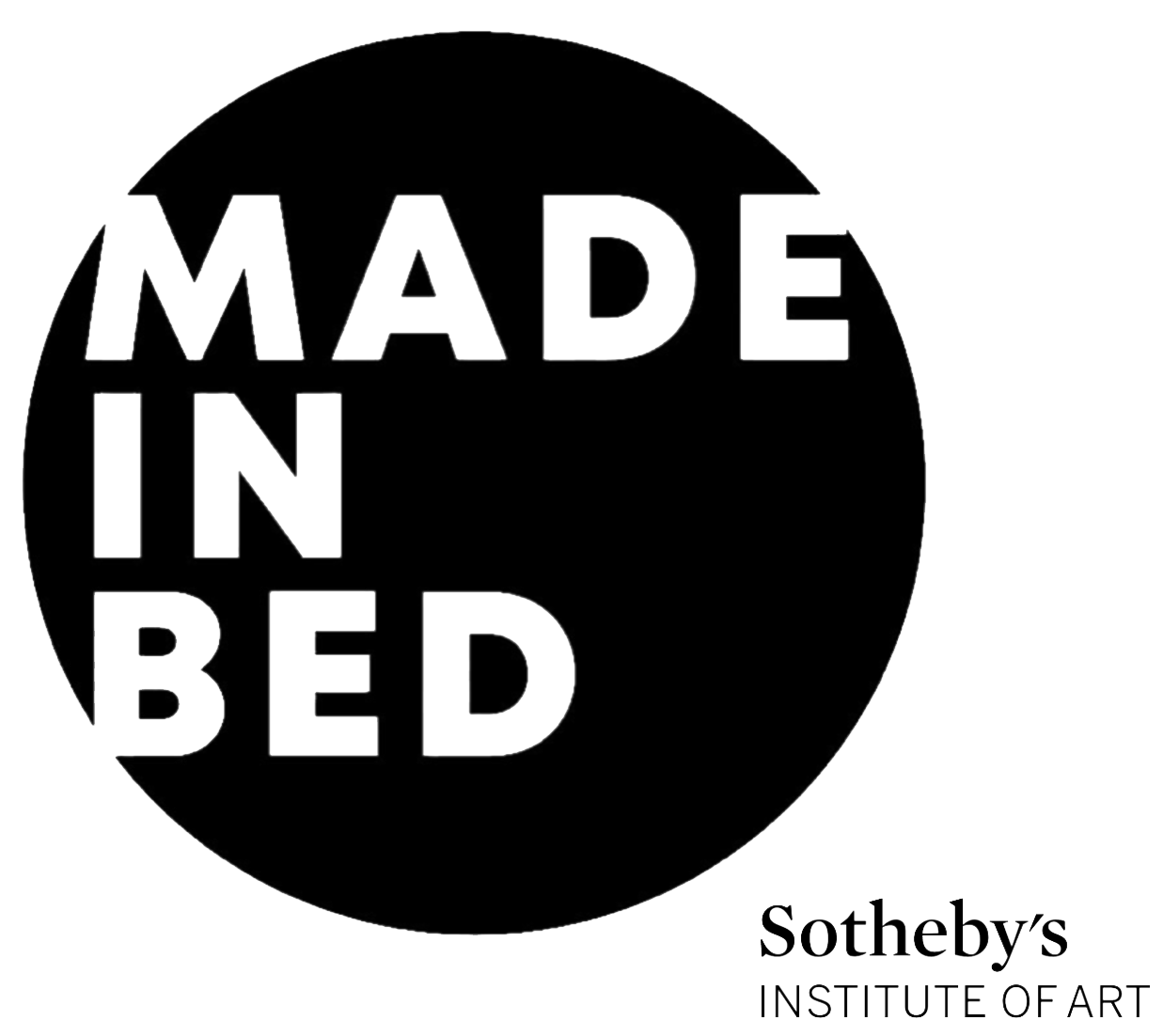My Body is a Sundial—Bryony Ella’s Solar Cartography of Urban Heat
Today, the sun has become both balm and burden.
As temperatures rise, the BBC forecasts a summer twice as likely to be hotter than average. Spring 2025, already record-breaking in its warmth and dryness, preludes a season that may scorch rather than soothe.
In this light, both literal and metaphorical, British-Trinidadian artist Bryony Ella steps forward with a quiet urgency, turning her own body into an instrument of measure and metaphor.
Bryony Ella. Photo Courtesy: Ewelina Ruminska.
Before the sun became a warning sign, it was a source of reverie. When the days lengthen and the sun stretches further across the sky, the world seems to exhale. Laughter rings louder, bodies move lighter, and even the city softens beneath the haze of gold. As endorphins dance through skin awakened by light, we find ourselves, quite literally, more alive. Like solar panels, or perhaps sunflowers, we tilt toward warmth.
It is no coincidence that the Impressionists painted leisure under dappled sun: Monet’s garden, Renoir’s boaters, or Manet’s picnickers, forever mid-lunch and mid-laugh. The sun has long served as both muse and medium, illuminating not only canvas but the cultural imagination itself. Van Gogh's sun-loving blooms tilt not merely toward light, but toward desire, and the possibility of joy.
By Vincent van Gogh—Digital photo by User:Postdlf, Public Domain.
In the courtyard of Orleans House Gallery, beneath the high June sky, a sculpture titled My Body is a Sundial catches the light, not just physically, but metaphorically.
Installation View, Bryony Ella, My Body Is a Sundial, 2025 Orleans House Gallery. Photo Courtesy: Ewelina Ruminska.
Created by Ella, who is an artist researcher on the Wellcome funded Melting Metropolis project, the sculpture is part of the Cultural Reforesting Programme at the gallery. Along with the team at Melting Metropolis, Ella’s remit is to use her art to illustrate how Londoners, New Yorkers and Parisians have thought and felt about heat and its impact on their health. Recently extending their research to Port of Spain (Trinidad and Tobago), the ground-breaking research project based at the University of Liverpool, UK, and Queens College, New York, brings together a team of scholars, a community engagement manager, and a research artist to understand better the past and present of urban heat and health.
Their mission statement reads:
With a focus on sensory, community, and cultural experiences in postwar London, New York, and Paris, we investigate how city dwellers have experienced heat and sought to mitigate its impact on their health and well-being. We aim to move beyond the widespread focus on “climate resilience” to uncover the multiple responses to urban heat and health during an era of climate breakdown.
Taking inspiration from the ancient technology of the stone sundial, Ella’s work imagines it as a living, breathing body inviting viewers into a powerful and contemplative encounter with art, prompting a deep meditation on how time, temperature, memory, and the body serve as an archive.
Installation View, Bryony Ella, My Body Is a Sundial, 2025 Orleans House Gallery. Photo Courtesy: Ewelina Ruminska.
The sundial, one of humanity’s earliest tools for measuring time, was always more than a clock, it was a communion with the sun, a humble registration of celestial presence on earthbound surfaces. In Ella’s hands, this ancient technology becomes flesh: skin as dial plate, breath as ticking hand. Her sculpture invites us to feel what it means to be marked by the sun; to be scorched and soothed by it, in cities where heat now accumulates unevenly, amplifying histories of inequality etched into the built environment.
Part ritual site, part instrument, My Body is a Sundial doesn’t sit silently in the gallery. It hums. It listens. It asks: what does heat remember? What lingers in the air between glass and asphalt, between colonial grids and diasporic footprints? Within the installation, the human body becomes a container for these questions—and perhaps, a vessel for answers.
As Ella writes:
“As the heart of our solar system moves through my mid-afternoon body, a body that dreams of dawn as dusk draws closer, the intense pressures of heat, clock-time, uncanny seasons and narrow sightlines of how to live well, here, now, surface.
Yet, subtle movements and minute noticings stir here, too. Re-membering my ancestral patterns. Rescuing my childhood awe. Stirring empathy for a body that has accompanied me throughout; also trapped in these cities. Also fuel for systems that are distorting our evolutionary cycles.”
-Bryony Ella
Bryony Ella in her Cornwall Studio. Photo Courtesy: Ewelina Ruminska.
This quote is not just reflective—it’s a manifesto. One that grounds My Body is a Sundial as a work of both resistance and repair. It invites us to attune ourselves to subtle movements, to trace the shadows cast by our own presence, and to consider the ways in which our bodies are themselves temporal, ecological instruments, inscribed with memory, capable of calibration.
Just as Ana Mendieta imprinted her silhouette into the earth to mark the ephemerality of the female body in nature, so too does Ella transform the body into a site of cosmic correspondence and through her complementary ritual performance Stand of the Sun, which takes place on 19th June 2025, for the summer ritual.
That evening, she and a group of creatives will lead participants on a sonic and kinesthetic journey—a public ritual at Orleans House Gallery. Part of the Richmond Arts and Ideas Festival and the ongoing Cultural Reforesting programme, the event Stand of the Sun is an invitation to listen. Not just with ears, but with skin, breath, shadow.
Stand of The Sun, 2025 Orleans House Gallery. Photo Courtesy: Bryony Ella.
A communal offering to the star that governs all life, Bryony Ella and a constellation of musicians and artists will transform the courtyard into a living soundscape where climate, ancestry, and resilience converge.
At the heart of this solar ceremony is singer Bumi Thomas, whose voice becomes both invocation and balm, carrying the warmth of longing, memory, and return. Joining her is Emmanuelle Clem, whose layered vocals offer a harmonic counterpoint that shimmers with intimacy and ancestral recall. Their performance is underscored by Carlene Etienne on steel pans—an instrument born from histories of resistance and reinvention in Trinidad. The echo of metal on metal evokes not only celebration but survival, tracing the percussive lineage of jouvert, where the rhythms of emancipation still resound before dawn.
Bumi Thomas. Photo Courtesy: Ewelina Ruminska.
Performing alongside them, with blessings from elders and his master teachers, is Max Rademacher on the ngoni, a traditional West African stringed instrument. It is the pulse of the performance—its twang the very ricochet of the sun: uncanny, sharp, and resonant—a call across time and terrain.
Complementing these Afro-Caribbean ancestral sounds is Clare Hirst, who lends both the rasp and cry of the saxophone—a signal flare of jazz heritage and improvisational freedom—and the gentle flickering of the flute, which, like breeze, like breath, lifts with lightness, cutting through silence and carrying the listener into quieter registers of reverence.
With Kieron Daniel on cello and Miles Danfo on upright bass, spectral threads of Western folk are woven in, adding tension and tenderness. Together, these instruments stitch time across continents, holding space for contradiction and convergence. Pharoah Russell brings an earthy pulse to the ritual on drums, with Cosimo Keita on percussion rooting the experience in rhythm, embodiment, and the deep ceremonial beat of the Caribbean.
Film Still, Stand of The Sun, 2025 Orleans House Gallery. Photo Courtesy: Bryony Ella.
And if transcendence hasn't already carried you to the stars, enveloped in the polyrhythmic density of this offering, Elixir joins the creative team to offer a further spiritual layer of sonic healing—using gongs and bowls to expand the soundscape into realms of restoration and recalibration.
At the core of this performance, though, is choreographer Antoine Marc, who, alongside Ella and longtime collaborator Bumi Thomas, has incubated this luminous ritual, which—like the summer sun—caresses your sweat-beaded skin. Marc’s presence shapes the ritual’s spatial and embodied language, guiding dancers Olia Poliakova, Renako McDonald, Robert Dunkley-Gyimah, Rose Aïda Sall Sao, and Sadé Alleyne—articulating the body's response to sun, sound, and spirit.
Antoine Marc. Photo Courtesy: Ewelina Ruminska.
The entire performance unfolds as a sonic cartography of the solstice: where day pauses at its longest, and a threshold opens between past and present, body and climate, ritual and art. This improvised ensemble, curated with deep care, blurs the boundaries between Western classical and African diasporic sound traditions, not to collapse them, but to let each illuminate the other. In doing so, Stand of the Sun becomes a new form of communion, one where listening is also a kind of remembering.
Through this performance, participants will be asked to witness their own bodies as sundials, to reattune to the sun’s gaze, a force that, despite being omnipresent, has become abstracted by our climate-controlled lives. In a world where cities burn not just from heat, but from over-extraction and disconnection, Stand of the Sun becomes an offering: a moment to pause, to recalibrate, to remember how to live well, with, not against, the rhythms of our star.
Film Still, Stand of The Sun, 2025 Orleans House Gallery. Photo Courtesy: Bryony Ella.
Ella's work challenges us to consider how we might find new ways—or old ways—of being in relationship with the sun. Can we re-member ancestral patterns, rescue childhood awe, and stir empathy for a body that is also trapped in these cities, also fuel for systems distorting evolutionary cycles?
Through My Body is a Sundial and Stand of the Sun, Bryony Ella offers a poetic, participatory approach to understanding and responding to the climate crisis. Her work serves as a reminder that our bodies, like sundials, are instruments attuned to the rhythms of the sun, capable of sensing and narrating the stories of our warming world.
For more information on the Cultural Reforesting exhibition and the Stand of the Sun event, please visit Orleans House Gallery and Ticketsource.
Chantel Akworkor Thompson,
Agents of Change Editor, MADE IN BED











